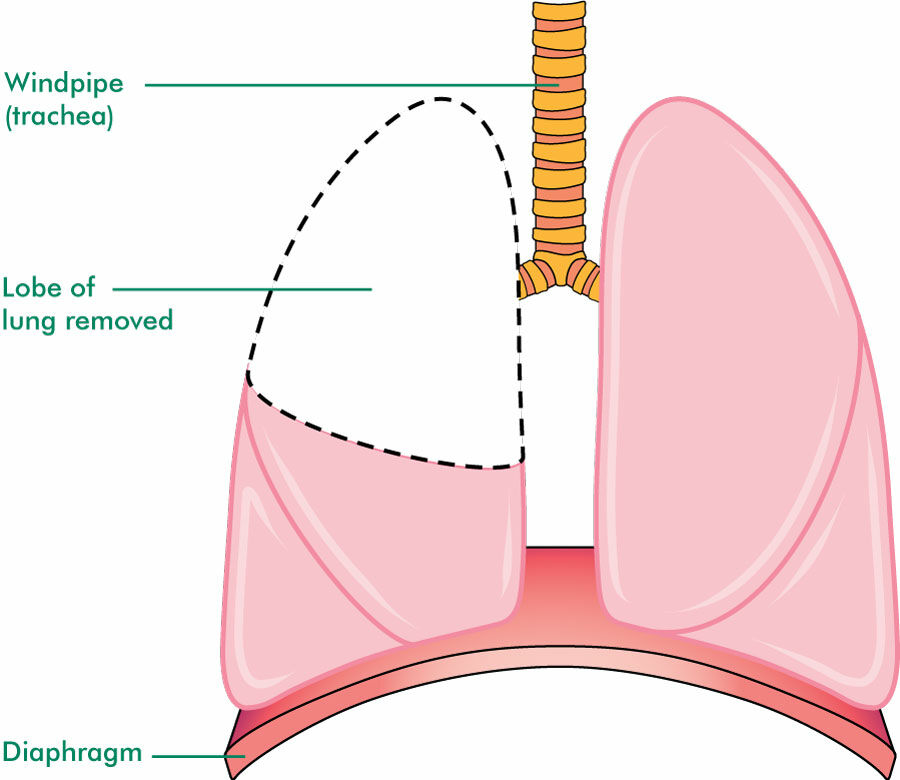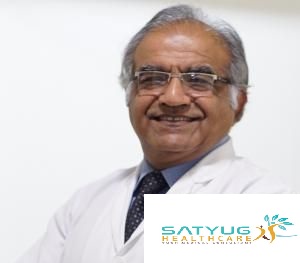Lobectomy Surgery cost in India

| Surgery Name | Cost | Room-Category | Hospitalization |
|---|---|---|---|
| Lobectomy Surgery cost in India | $7500 | Single | Patient - 5 days stay in a single room. |
| Inclusion | Exclusion | ||
|
1.Overstay more than package days, |
||
Know More About Procedure & Surgery
What is lobectomy?
A lobectomy is the surgical removal of a lobe of an organ. It most often refers to the removal of a section of the lung, but it can also refer the liver, brain, thyroid gland, or other organs. Every organ is made up of many sections that perform different, specific tasks. In the case of the lungs, the sections are called lobes. The right lung has three lobes, which are the upper, middle, and lower lobes. The left lung has two lobes, the upper and lower lobes. In most cases, surgeons perform a lobectomy to remove a cancerous portion of an organ and to prevent the cancer from spreading. This may not entirely get rid of the disease, but it can eliminate the primary source of it.
Surgeons may also perform lobectomies to treat:
- fungal infections
- benign tumors
- emphysema
- lung abscesses
- tuberculosis
Lobectomy or Bilobectomy
The lungs are split into large sections called lobes. The right lung is made up of three lobes, and the left two. A lobectomy involves removing a lobe that contains a tumor. If the cancer cells have not started to spread, a lobectomy can cure lung cancer. If the cancer is so large that two lobes need to be removed, the procedure is called a bilobectomy.
Risks Involved in lobectomy
The risks of a lobectomy include:
- An infection
- Bleeding
- An empyema which is a collection of pus in the chest cavity
- A bronchopleural fistula, which is a tube-like track that causes air or fluid to leak out at the surgical site
- A tension pneumothorax occurs when air gets trapped between the lung and chest wall
Benefits
Having a lobectomy can stop or slow the spread of cancer, infections, and diseases. Performing this surgery may also allow your doctor to remove a portion of an organ that affects the function of other organs. For example, a benign tumor may not be cancerous but may press against blood vessels, preventing adequate blood flow to other parts of the body.
Preparation
- You’ll need to fast for at least eight hours before a lobectomy. This usually means not eating or drinking after midnight.
- Smokers need to stop smoking before having this surgery. This will improve your chance of a successful recovery.
- Most people will receive a sedative before the surgery to help them relax. You may also receive antibiotics, and any other preparatory measures your doctor recommends.
During the Procedure
Your surgeon will perform a lobectomy while you’re under general anesthesia. Several types of lobectomies exist.
For example, a thoracotomy involves your surgeon making large incisions in your thorax, or chest. Your surgeon will make an incision on the side of your chest, often in between two ribs and then create a space between your ribs to see inside your chest and to remove the lobe.
An alternative to a traditional thoracotomy is video-assisted thoracoscopic surgery (VATS), which is less invasive and generally has a shorter recovery time. During this procedure, your surgeon will likely make four small incisions around the surgical area to insert a small camera and surgical tools. These allow your doctor to perform the lobectomy and remove the problematic lobe once it’s identified. Your surgeon may place a small, temporary tube in your chest after the surgery is complete.
After the surgery, be sure to avoid the following while healing:
- Tobacco smoke
- Chemical fumes and harmful vapors in the air
- Environmental pollution
- Exposure to people with upper respiratory infections, such as colds and the flu
Contact your doctor if you have any of the following side effects after surgery:
- Shortness of breath
- Trouble breathing
- Pain when breathing
- Redness, swelling, or pain around the incision
- A high fever
- Any changes in your mental state
After the Procedure
After the procedure, you will spend some time in a recovery room. You may be sleepy and confused when you wake up from general anesthesia or sedation. Your healthcare team will watch your vital signs, such as your heart rate and breathing. You’ll be given pain medicine if you need it. A chest X-ray may be done right after the surgery. This is to make sure your lungs are OK. You will stay in the hospital for several days.
You may have one or more chest tubes near the cut (incision) to drain air or fluid from the chest. The chest tubes may cause pain when you move, cough, or breathe deeply. They will be taken out before you leave the hospital. You will be taught deep-breathing exercises and coughing methods to help your lungs re-expand after surgery. This is to help breathing and prevent pneumonia. You may need oxygen for a period of time after surgery. In most cases, the oxygen will be stopped before you go home. Or you may need to go home with oxygen.
You may be given fluids to drink a few hours after surgery. You will be given food to eat as you are able. Before you leave the hospital, you’ll make an appointment for a follow-up visit with your healthcare provider. You will go home when your healthcare provider says it’s OK.
At home, keep the cut clean and dry. The stitches or staples will be removed during a follow-up appointment. The cut may be sore for a few days. Your chest and shoulder muscles may ache, especially with deep breathing, coughing, and activity. You can take pain medicine as advised by your healthcare provider. Aspirin and some other pain medicines may increase bleeding. Make sure to take only the medicines your healthcare provider advises. Keep doing the breathing exercises you learned in the hospital. Slowly increase your physical activity as you can handle it. It may take a few weeks to return to normal. You may need to not lift any heavy items for a few months. This is to prevent strain on your chest muscles and the cut.
Take steps to prevent exposure to:
- Upper respiratory infections, such as colds and flu
- Tobacco smoke
- Chemical fumes
- Environmental pollution
Contact your doctor, if you have any of the below:
- Fever of 100.4°F (38°C) or higher, or as advised by your provider
- Redness or swelling of the incision
- Blood or other fluid leaking from the incision
- Pain around the incision that gets worse
- Feeling short of breath
- Trouble breathing
- Pain with breathing
- Chest pain
- Cough
- Confusion or other change in mental state
- Green, yellow, or blood-tinted sputum (phlegm)
Frequently Asked Questions
The affected lobe is removed, and the remaining healthy lung tissue can work as normal. A lobectomy is most often done during a surgery called a thoracotomy. During this type of surgery, the chest is opened. In most cases, during a lobectomy the cut (incision) is made at the level of the affected lobe.
Top doctors for LOBECOTOMY / BILOBECTOMY treatment| Cost for LOBECOTOMY / BILOBECTOMY repair|Book online appointment| Best treatment for LOBECOTOMY / BILOBECTOMY in India. Search Results Web results for cost of LOBECOTOMY / BILOBECTOMY treatment|
HAPPY PATIENTS
What Our Patients Are Saying
Our Gallery


























































































